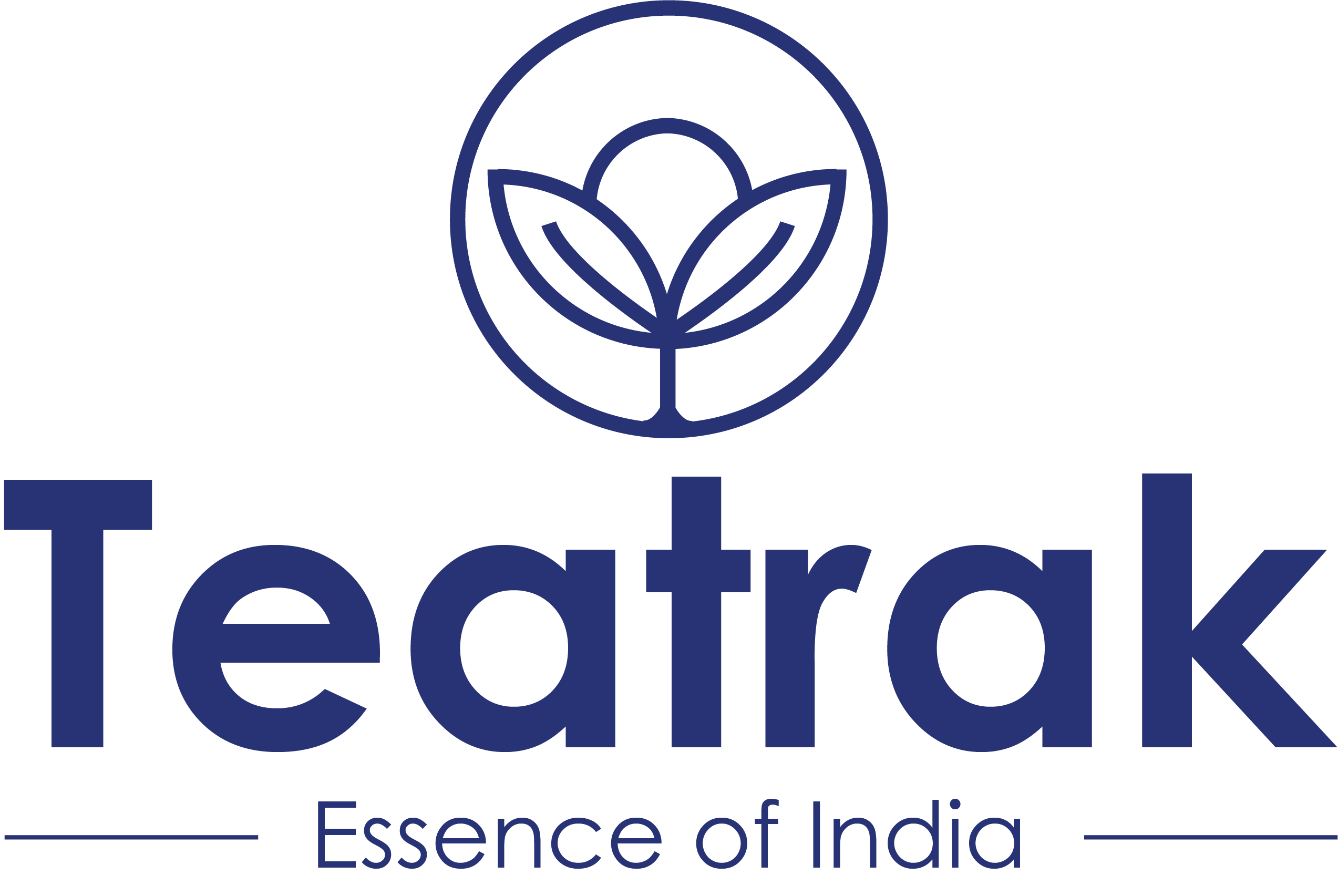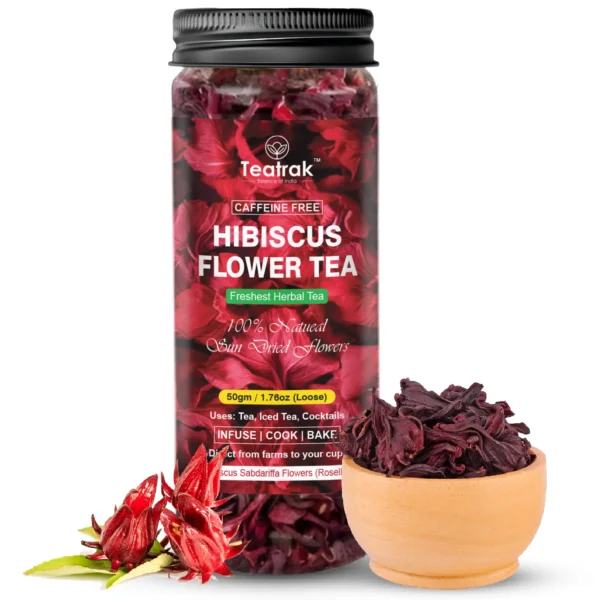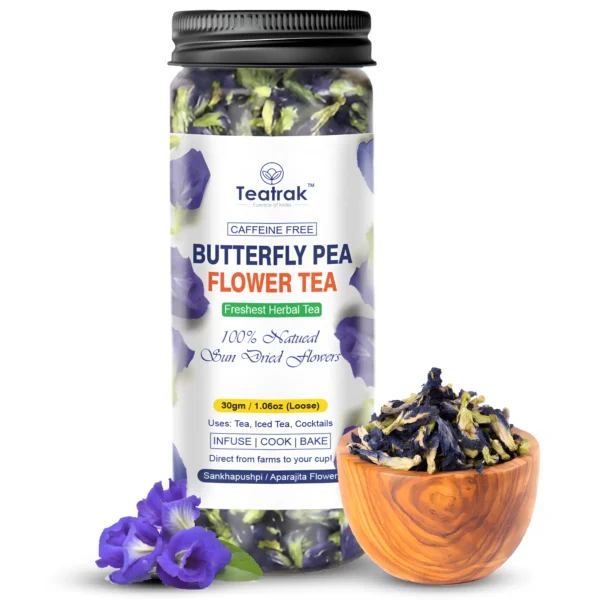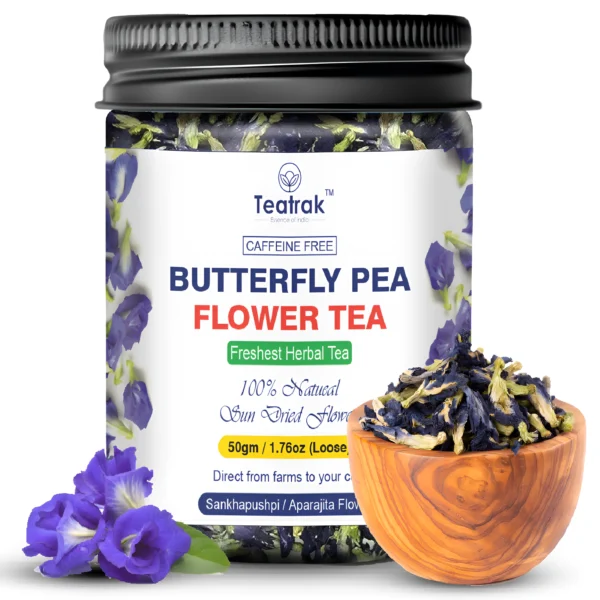What is Flower Tea?
Flower tea, also known as herbal flower tea or floral infusion, is a type of tea made from the infusion of various edible flowers, either alone or in combination with other ingredients like herbs or tea leaves. These flowers are typically dried before being steeped in hot water. Some popular types of flower teas include chamomile tea, hibiscus tea, lavender tea, rose tea, and chrysanthemum tea, among others.
Tisanes are a natural infusion of herbs, spices, or flowers in hot water when steeped for 2-3 mins. These are Caffeine Free and are often referred to as Herbal Teas. Due to the innate softness of flowers, these teas are generally much smoother than Green teas.
Tisanes differ from other teas fundamentally as teas are generally made from the leaves of the plant Camellia Sinensis. It includes all sorts of teas such as green, black, yellow, white, or say oolong tea. But Flower teas are made directly from natural flowers, dried or fresh.

History of Flower Teas
The history of flower-based tea dates back centuries and can be traced to various cultures around the world. Here is a brief overview of the history of flower-based teas in different regions:
Ancient China:
- China has a long history of using flowers in tea preparation. One of the earliest recorded flower teas is chrysanthemum tea, which dates back to the Tang Dynasty (618-907 AD). Chrysanthemum tea was initially consumed for its medicinal properties, such as improving eyesight and detoxifying the body.
- Jasmine tea, made by scenting green tea leaves with jasmine flowers, also has ancient origins in China and was popularized during the Song Dynasty (960-1279 AD).
- Flower teas like rose and lotus have been enjoyed for their fragrance and potential health benefits in Chinese culture for centuries.
Ancient Egypt:
- Ancient Egyptians were known to infuse various flowers and herbs into hot water for medicinal and aromatic purposes. These infusions were precursors to modern flower-based teas.
Middle East:
- Herbal infusions using flowers and herbs have been a part of Middle Eastern culture for centuries. For example, rose water and rose petal infusions have been used in Middle Eastern cuisine and beverages for both flavor and fragrance.
Europe:
- The use of flowers in teas became more prominent in Europe during the Middle Ages. Flowers such as chamomile and lavender were used for their medicinal properties and as flavoring agents.
- During the Victorian era, flower teas became popular in England, and the tradition of afternoon tea often included floral teas served in fine china teacups.
Southeast Asia:
- In countries like Vietnam and Thailand, flower-based teas are a part of traditional herbal medicine and cuisine. Chrysanthemum tea and lotus tea are examples of flower teas enjoyed in these regions.
Modern Times:
- Flower-based teas have gained popularity worldwide in recent years due to their unique flavors and potential health benefits. Varieties like hibiscus tea, which is enjoyed for its tart and refreshing taste, have gained a global following.
- Artisanal and specialty tea shops often offer a wide range of flower-based teas, appealing to those seeking natural and exotic flavors.
Today, flower-based teas are enjoyed for their diverse flavors, aromas, and potential health benefits. They have become a beloved part of tea culture, and their historical roots continue to influence tea traditions and innovations around the world.

Uses
Flower Tea has been used for centuries for several purposes. In traditional medicines, these have been used for healing due to their richness in antioxidants, vitamins, and other nutrients.
In ancient China, the use of flower teas was a common practice in Traditional Chinese medicines.
In Indian Ayurveda, one of the world’s most ancient and traditional healing systems, flower teas have been an integral part pertaining to its philosophy of using elements from nature to balance ourselves.
One such exotic flower tea is Blue Pea Tea, also known as Blue Tea or Butterfly Pea Flower Tea. This is made from the Butterfly Pea Flowers often called Shankhpushpi, Aprajita, or Neelkanth in India.
Some Potential Benefits of Consuming Flower Tea
- Relaxation and Stress Relief: Many flower based teas, such as chamomile and lavender, are known for their calming and soothing properties. They can help reduce stress, anxiety, and promote relaxation.
- Sleep Aid: Some flower based teas, like chamomile and valerian root, are often consumed before bedtime to improve sleep quality and help with insomnia.
- Antioxidants: Flowers, like other plants, contain antioxidants that help combat free radicals in the body. Hibiscus tea, for example, is rich in antioxidants and vitamin C.
- Digestive Health: Certain flower based teas, such as peppermint and ginger with hibiscus, can aid in digestion and alleviate digestive discomfort like bloating and indigestion.
- Cold and Flu Relief: Flower teas with properties like soothing sore throats or reducing congestion, such as hibiscus or elderflower tea, can be consumed to alleviate cold and flu symptoms.
- Immune Support: Many flower teas contain vitamins, minerals, and compounds that can boost the immune system and help the body fight off infections.
- Anti-Inflammatory Properties: Some flowers, like calendula and hibiscus, possess anti-inflammatory properties that may help with conditions like arthritis and skin irritations.
- Skin Health: Flowers like rose and hibiscus are often used in skincare products due to their potential benefits for skin health. Drinking flower teas may promote healthier skin from the inside out.
- Weight Management: Certain flower teas, such as chrysanthemum tea, are believed to aid in weight management by boosting metabolism and assisting in fat digestion.
- Hydration: Flower teas are a hydrating option, just like traditional teas. Staying well-hydrated is essential for overall health.
- Culinary Uses: Edible flowers and flower teas can be used in cooking and baking to infuse unique flavors into dishes. They can be used to make syrups, sauces, and even desserts.
- Aromatic Pleasure: Flower teas often have a pleasant aroma and taste, making them a delightful and soothing beverage choice.
Disclaimer:These benefits have not been evaluated by the Food and Drug Administration. This product is not intended to diagnose, treat, cure or prevent disease. If you are pregnant or have any ongoing health conditions please check with your doctor before consuming any herbal beverages.






